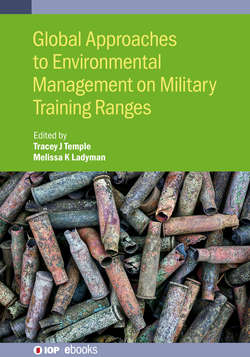Читать книгу Global Approaches to Environmental Management on Military Training Ranges - Tracey Temple - Страница 44
На сайте Литреса книга снята с продажи.
2.4.3 Other sources of error
ОглавлениеThere are other sources of error associated with sampling and characterization. A few of these will be discussed here.
Materialization error, a component of sampling error, relates to how a sample is collected. It is associated with the tools used for the collection of the sample. If the tool is not large enough to collect all particle sizes (delimitation error) or difficulty is encountered in obtaining or extracting the material from the sampling device (extraction error), the consistency of the sample increments cannot be maintained and the quality of the sample will be degraded. Consistency of the shape of the increment throughout its depth is also very important, as is the uniformity of the increments that make up a sample (figure 2.3). Munitions constituents such as energetics and metals tend to initially accumulate on the surface of ranges. A coring tool that samples at a fixed diameter and can be set for a pre-determined depth will provide reasonably consistent increments. Sampling tools such as spoons and trowels will skew the sample data by overemphasizing the very top of the sample and not consistently reaching the target depth. Thus, they should only be used in circumstances where a coring tool will not work, such as in very loose sandy soils or soils with stones larger than the coring bit diameter. The increment geometry must allow the concentration of the contaminant to be represented consistently throughout the depth of the increment.
Figure 2.3. Increment shapes from different tools: (a) corer, (b) trowel and (c) spoon.
Sample handling can also affect the sample quality. Temperature, holding times, cross contamination and sample preservation are all factors that need to be controlled when handling samples. Sample processing errors associated with activities such as field splitting of samples, sample drying, comminution and subsampling need to be controlled as well as quantified through lab QA procedures. Sample and subsample extraction can be classified as a sample preparation procedure or an analytical lab procedure. In either case, QA also needs to be performed to ensure no loss of the analyte in the subsample. Finally, data analysis errors may also occur. Any of these errors may be fatal to the quality of the sample and the characterization effort, reinforcing the need to be vigilant during every step of the process. Figure 2.4 illustrates these errors.
Figure 2.4. Error sources associated with a land-based DU characterization.
